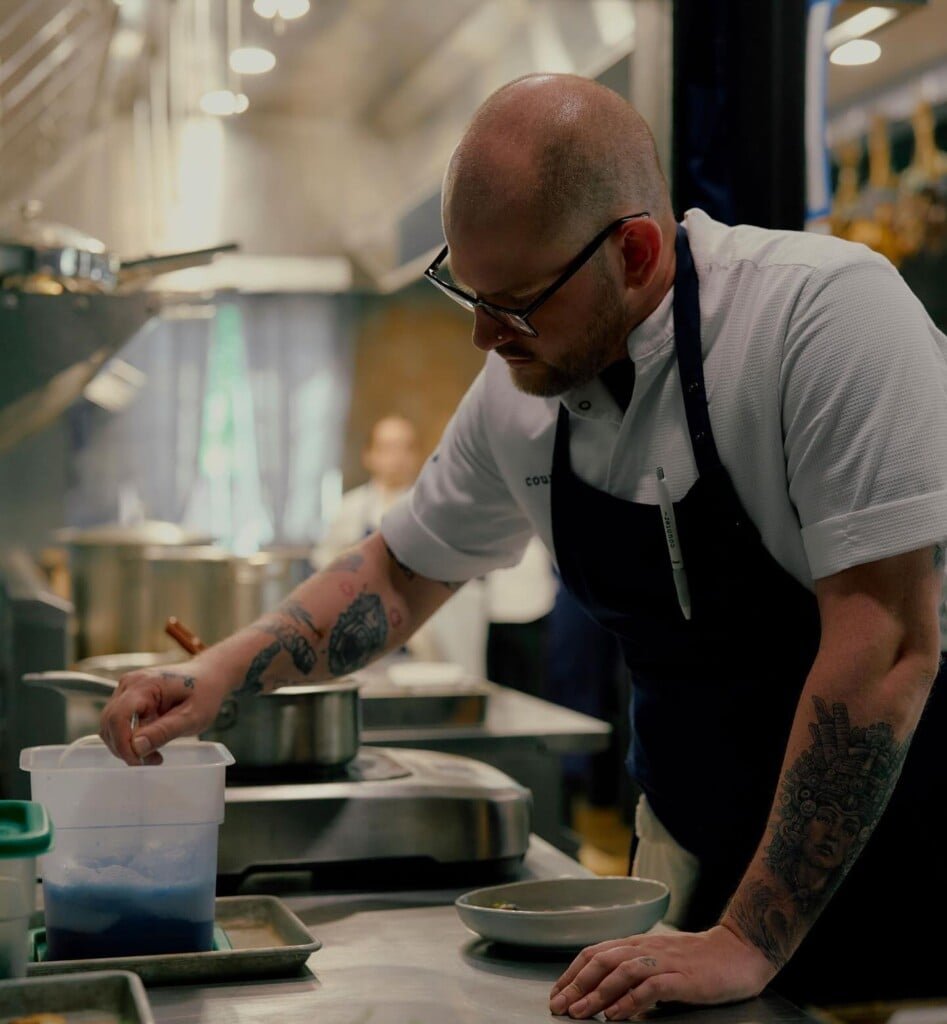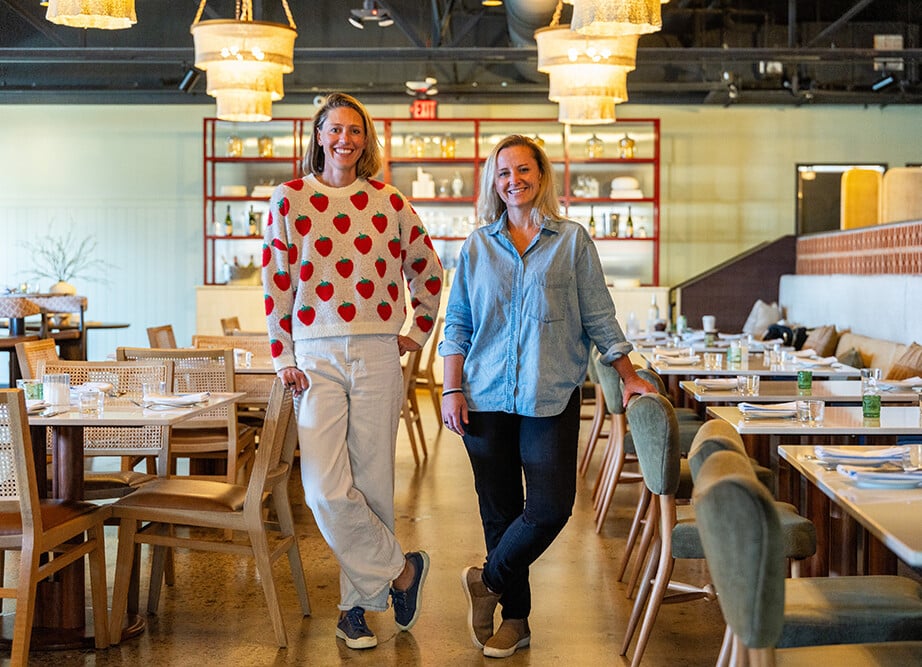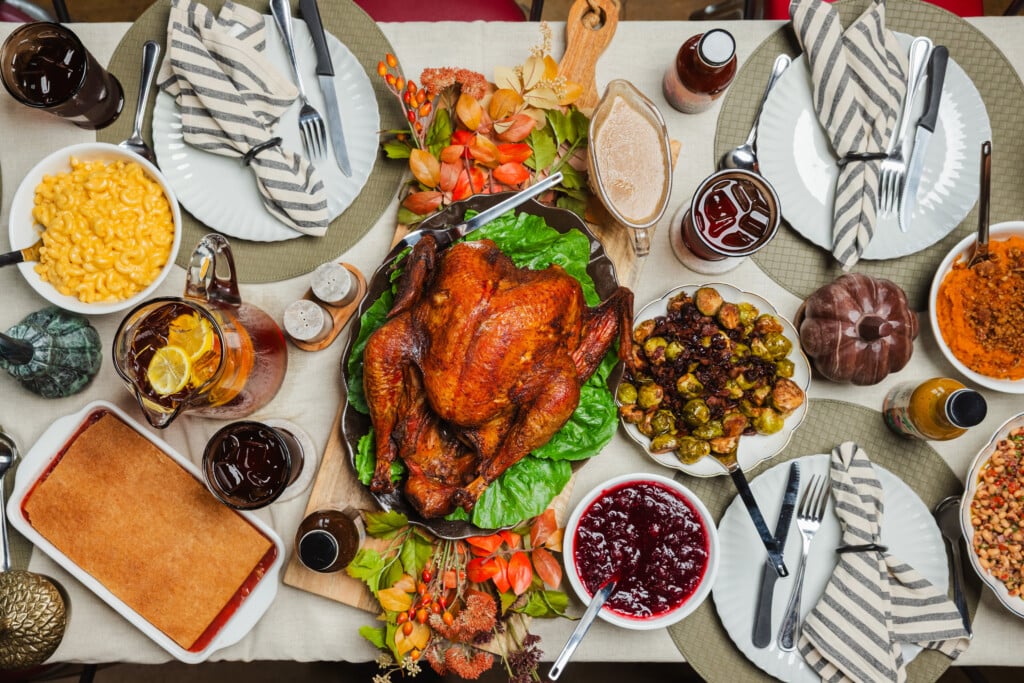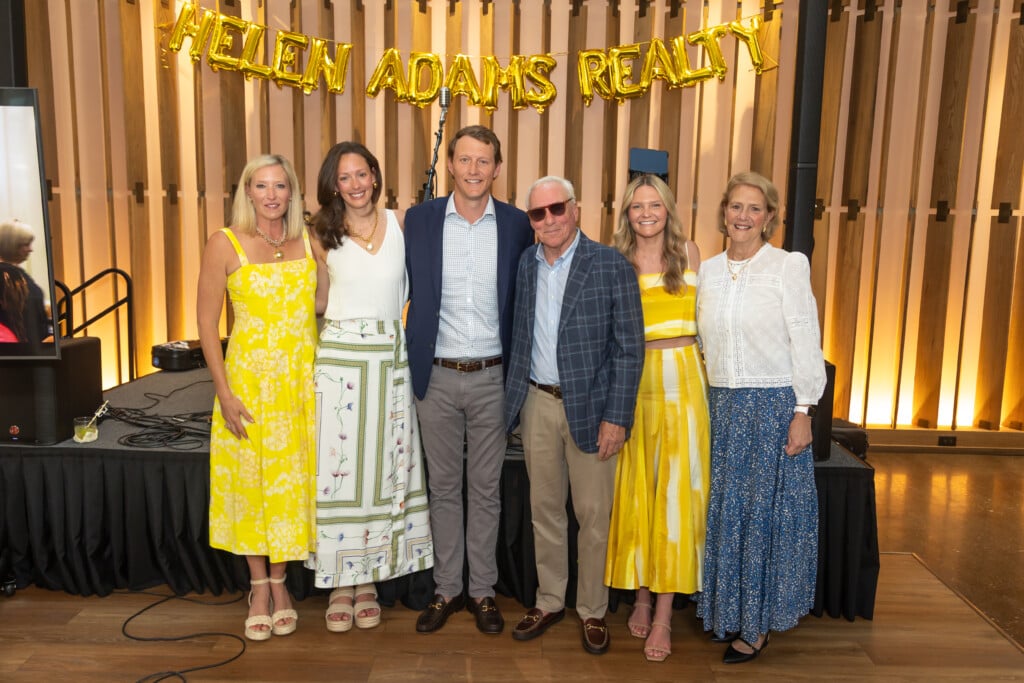The Future of Dining in Uptown Charlotte
With exceptions, and especially since COVID, the city center hasn’t been the most fertile ground for dining. That may be changing.
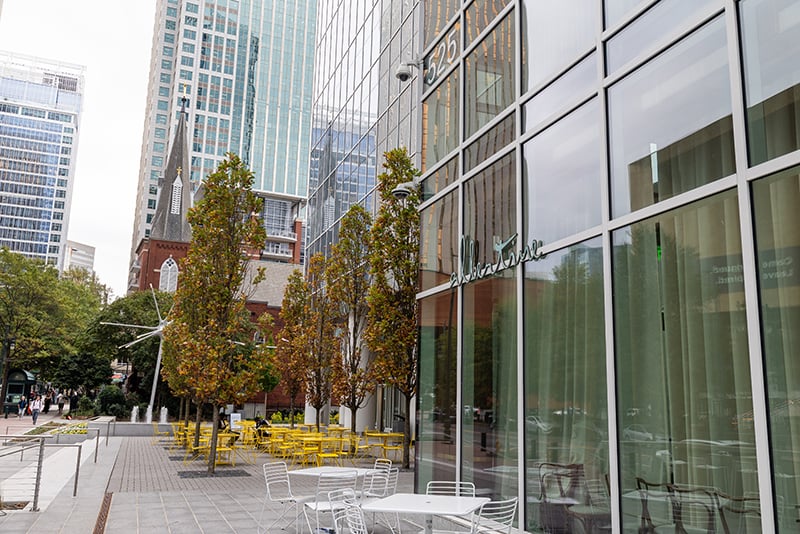
Albertine has a lot of reasons to attract attention. There’s the luxe dining room, the Rorschach test swirls in the massive stone slab behind the bar, the Mideast-meets-Carolinas playfulness of the menu.
Then there’s the curiosity behind owners Joe and Katy Kindred’s decision to make their first foray into the city center. They opened their bistro, Kindred, in Davidson in 2015, followed by Hello, Sailor on Lake Norman and several locations of the fast-casual eatery Milkbread. They’ve mostly grown their business in smaller places. What finally drew them to a space on the ground level of the new Duke Energy building, in the heart of uptown’s arts campus?
“It’s a marquee spot,” Katy says. “We got excited to make a love letter to the city.”
With uptown’s towers and street life finally—maybe—shaking off the pandemic, is it time for local restaurateurs to look at uptown as a new opportunity?
Plenty of Charlotte’s most active restaurant groups have found success away from Trade and Tryon. Jon Dressler stayed away for years until he opened Fin & Fino in 2018. Frank Scibelli’s FS Food Group, which includes Little Mama’s, Mama Ricotta’s, Midwood Smokehouse, Calle Sol, Paco’s Tacos & Tequila, and multiple locations of Yafo Kitchen, has done just fine without driving a building stake into the middle of uptown.
Bruce Moffett, who’s helped anchor Charlotte’s food scene since he opened Barrington’s near SouthPark in 2000, has stayed away, too. He’s focused on Madison Park with Good Food on Montford and Myers Park with Stagioni. His former restaurant, NC Red, was in Plaza Midwood, in a space that’s now occupied by Scibelli’s Calle Sol.
“I just always felt like I was a neighborhood restaurant kind of guy,” Moffett says. “And uptown was contingent on what was going on with business, like the banking and stuff. And it could go horribly wrong due to no fault of my own—COVID bore that out.”
When Moffett was starting out with Barrington’s, uptown was pricey real estate for the thin profit margins of restaurants. “Especially back in the day,” he recalls. “Not only expensive, but (landlords) were basically looking for larger chains. I had no idea how to run a 200-seat restaurant.” Barrington’s has 45 seats.
Dalton Espaillat, whose Raydal Hospitality Group has multiple locations of Sabor, Three Amigos, and La Caseta, always aimed for neighborhoods and suburbs. With an engineering background, he began with a formula: a combination of population density, daytime population—the number of people who need lunch—and income bracket. He threw in distance, too, aiming to have each of his locations at least 3 miles apart so they didn’t “cannibalize” each other. It worked, helping him fuel his growth from Elizabeth to Ballantyne.
“My goal was always to put one in every neighborhood,” Espaillat says. “That theory worked very well.” For years, he avoided uptown “because there’s only lunch, and that’s it.”
He finally opened a Sabor at 6th and College streets in 2019 because he got a good deal on a lease and the space was big enough to house his corporate offices and training programs on the second floor. During the pandemic, that location remained in business because so many nearby restaurants closed. Still, he says, if he lost his lease there, he probably wouldn’t go back uptown unless he found a really good deal. It isn’t just the cost of center city real estate, he says. It’s too hard for employees to park. “Nobody wants to work in uptown,” he says.

Dalton Espaillat of Raydal Hospitality Group opened a Sabor Latin Street Grill at 6th and College streets in 2019. It’s one of 18 locations in the Carolinas.
Before the 2008 economic crisis, large uptown employers like banks often subsidized uptown restaurants in new buildings, partly to support employees who needed places to eat and partly to feed uptown’s vibrant feel. But as that kind of support disappeared, another change came: The center of gravity started to move away from Tryon Street and into areas that felt younger and more exciting. South End became the place to be.
Adam Williams is a commercial real estate broker who specializes in restaurants through several businesses he owns, including RebelRebel Retail. The pandemic hit uptown hard, he says: “The spigot was turned off overnight, and many have never recovered.” But he sees offices and events bringing traffic back and believes Charlotte is rebounding faster than many larger cities. What he really sees, though, is a blurring of the lines between uptown and South End, with each becoming an extension of the other.
“South Tryon is cooking with gas,” he says, “and South End is getting pulled toward uptown.”
He believes a big part of Charlotte’s restaurant growth is due to uptown’s proximity to the neighborhoods that ring it, from South End and Dilworth to Myers Park and Elizabeth.
“How lucky are we that we have these incredible neighborhoods so close to where we work? Most cities don’t have that. We live in a city that affords us that privilege,” he says. “The demographics have changed so much in the last 10, 15 years. You have to thank South End for that. South End is our big-city neighborhood.”
What needs to happen now, he thinks, is a return to building owners granting incentives to the kinds of restaurants that draw people uptown, especially smaller, locally owned eateries.
“It’s crazy there’s not a Viva Chicken, a Yafo. Those deals should be uptown,” he says. “You can probably get a landlord that is willing to invest a little more heavily, to stretch to make a deal to make their office tower more attractive to getting people back uptown. In major cities, that’s how it’s done.”
For Katy Kindred, this feels like a rebirth, a return to the days when uptown’s chef talent had local ties—people like Gene Briggs at Blue and Tim Groody at Sonoma. “If the city wants more chef-driven spaces in the center of the city, landlords and owners are going to have to make it happen,” she says. “Now’s a great time for people like us.”
Still, not everyone’s ambitions have drawn them to the blocks around Trade and Tryon. Jeff Tonidandel and Jamie Brown have always favored historic properties they can renovate, starting in NoDa with Crepe Cellar, which they opened in 2009. Growler’s Pourhouse and Haberdish followed, and they’ve scaled up with Supperland in a former church in Plaza Midwood. Leluia Hall, which opens this month in Dilworth, is also in a former church.
They wouldn’t refuse to go uptown—“We’ve had offers in some buildings that have interested us,” Tonidandel says—but would rather stay in the neighborhoods. Operation in the city center, Brown says, “ties you to uptown and the success of uptown, while the neighborhoods feel a little more resilient on their own.”
Uptown, Tonidandel adds, “it’s not about your chef. It’s about whether Hamilton is in town. It’s not being in control.”
But after all their years of living, working, and raising their family in Davidson, the Kindreds see uptown as one more neighborhood with its own identity. They started out in Chicago, where going to work meant walking through vibrant, exciting streets. “We have the most fun in seeing how we can become a part of a community,” Katy says. “We get to make a mark on this beautiful city.”
KATHLEEN PURVIS is a longtime Charlotte writer who covers Southern food and culture.
